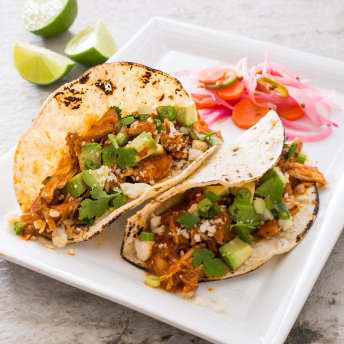I found this interesting article online this morning a site called “My Recipes”. Since most of us love cooking with garlic and have most likely burned it somewhere along the way, I thought this information might be useful.

Michael Goldman/Getty Images
Garlic might be one of the worst foods to burn, because there’s no turning back once you do. Unlike other veggies or meats that aren’t completely ruined if you just so happen to give them a little extra char than you intended for, garlic cannot withstand even 10 seconds too long over a flame. It turns black almost immediately and acquires an off-putting, bitter taste that can ruin an entire dish. The only fix to burning garlic is starting over.
So here’s how it usually happens: You’ve got your oil heating in a skillet, maybe with an onion or some other aromatics, and you add a clove or two of minced/finely chopped garlic. Seems legit, right? We’ve got to start building the flavor of this dish at some point, so we might as well start now. Ehhhh…sure, you can do this, but just know, that if you’re going to burn your garlic, this is how it’s done. Despite the lovely, garlicky aroma that will immediately engulf your kitchen upon dumping this fresh garlic into hot oil, this is oftentimes where things take a turn for the worst. Take your eyes away from that pan for more than a minute or two (especially if you turned on the heat with no abandon), and you’ve got yourself a handful of garlic that’s burned to a crisp. Not only that, but the oil and whatever other veggies are in that pan are going to taste pretty darn rotten, too.
Instead, if you simply punch down on a whole garlic clove with the side of your knife, gently crushing it so that it’s paper skin falls off and it’s slightly cracked open, you’ll still be able to impart that garlicky flavor into the oil. By prepping the garlic this way, you’ll avoid creating so much exposed surface area (like you do when you mince it) that the whole chopped clove immediately turns to a pile of ashes after 60 seconds of sizzling. Smaller bits burn quicker. If you really want to go the minced clove route, wait until the middle of your cooking process to add it to the concoction. This way, there’s less cooking time for your precious garlic to burn, and likely, more ingredients in the pan to help disperse the heat and act as a buffer for your delicate aromatic. Once you’ve got your slightly flattened cloves, put them in a skillet with oil (don’t be shy, a couple of generous glugs will do) over LOW HEAT. This temperature adjustment is crucial.
Once you’ve got your cloves gently cooking in oil over low heat, this is where the magic happens. Give the cloves some time to release their essence throughout the oil. As they start to cook, you can increase your heat to medium-high so that the white-ish cloves turn a warm, golden brown. If you rush this, however (shame, shame), your cloves are apt to turn black, so it’s important to keep a close eye. Before you go ahead and serve these babies, make sure that you’ve cooked them long enough. Because the cloves are whole, it’s going to take a little longer to soften and they may hold on to that raw, sharp taste.
When your cloves appear caramelized on the outside and creamy on the inside, you better be salivating, because you just created a garlic-infused oil. At this point, you can fish out the cloves, and add them to the blender to make a pesto, hummus or any other dip/sauce that could use a garlicky punch, or spread them atop a piece of toast, which should then rightfully be finished with a frizzled egg. One of my favorite restaurants, that is no longer open served baked garlic on toasted pita bread. It was delicious. That and a nice Cabernet Sauvignon was delightful with conversation. Not the best for a first date, if you live in “that” world.
With the wonderful oil that you’ve so carefully concocted, you can make stir-fries, one-pan pasta sauces, soups, or whatever dish you want to be laced with fresh, garlicky flavor. Ultimately, this is not the only way to cook garlic, however it’s, in my opinion, a foolproof method that consistently creates a pronounced yet not-too-overwhelming garlic flavor. And I’ve burnt garlic too many times to go back to my old ways.
Sara Tane wrote the original article. January 2018
<a target=&quot;_blank&quot; href=&quot;https://adclick.g.doubleclick.net/pcs/click?xai=AKAOjsvSpZ0iov_M5IU91evwl3DCOVVHzMW1eA5bzxdTxecX-HSHOLmPoTs1xaHIOUP8Wo3p954vuCpjDIPnc6puNjLkfeTFK1VceF_5WQlZWx4h92WZ9xb2nmiZTX3AQX9x3d2z8l69D3xv2lwhrt6d1xxxXjI09YMDQNPS7VIXfFpBxTVMz0jLIr6kf0GQUH7OYDxjtU2dWiqspdxm0RlF-qYEOC3eStJBsUeaoJRvfEJopx8m9Cqdf_qVGrJz_fiatJCMrPHWOml_w1iIbdmBys9zKS3gxtG3xm6W-EzQBgjaoCfkmF30AWt9oDLdOxoKlVeULeVN_hCuov3kBv1rXwILPkTgn1TK2p1VgwHGU5wqIwcBoYUerp4uvT8wN4ZkTYbzST3AysSwuLD4iy1cVA2UYdVIXJzyJCJIfJ9B0LZBeMiGGxVxZJahMnsU9O-YCkl59M82Q7XHo169xyCaGi_FmP-FA6PEOZotkJxBoxr-54dor0RfvHfqwn7cV8dz2v1YJvL4Bt_LuDZ4PYncDqI2_8gZYrR4qpvRgwcu4y1bGSKY9eYJ1VhEfquj-lgQeNcyGpOyq9jorBK433jHPC2Ox4u0Qfg_nGO2SUy51BNv49ibgzTUPKNSHHMTYO647pt_V68eqFcXTyGprpxxLXzGQ45FqvDIeelQXr_SeZNfjIzRMWslU-8CQw6HB3jH3QQI6KKr-VIHs1EA17VSzndVIrC5T8yIHs8gdf0hZ9tUZb4dSvVFQ-27KIn_aRAyWruTy0bENst7cJJK6-LEBzcfSVZ-PVhJgQtgCu4J6ANEbRwaPfGpfPnv7eF0ijvyILL8B6U&amp;amp;sig=Cg0ArKJSzA5EPHI369luEAE&amp;amp;urlfix=1&amp;amp;rm_eid=1938368&amp;amp;ctype=38&amp;amp;adurl=http://www.flipp.com&quot;><img src=&quot;https://s0.2mdn.net/ads/richmedia/studio/pv2/60052111/20170925102450494/QFC-Fallback-Leaderboard.png&quot; width=&quot;728&quot; height=&quot;90&quot; border=&quot;0&quot; /></a><img width=&quot;0px&quot; height=&quot;0px&quot; style=&quot;visibility:hidden&quot; border=&quot;0&quot; src=&quot;&quot; /><span id=”mce_marker” data-mce-type=”bookmark” data-mce-fragment=”1″></span>














